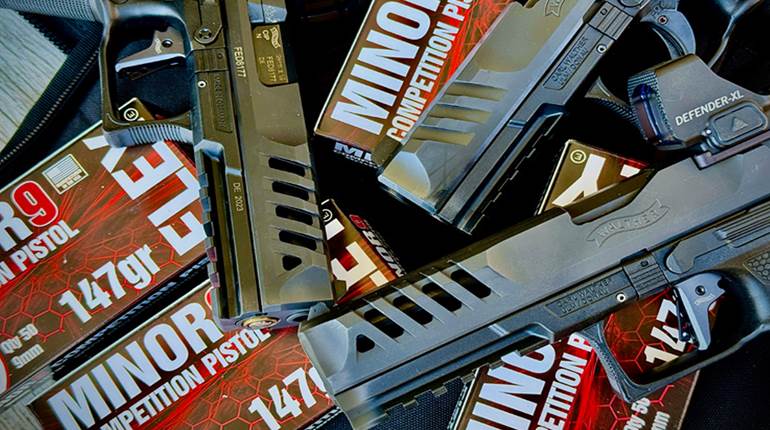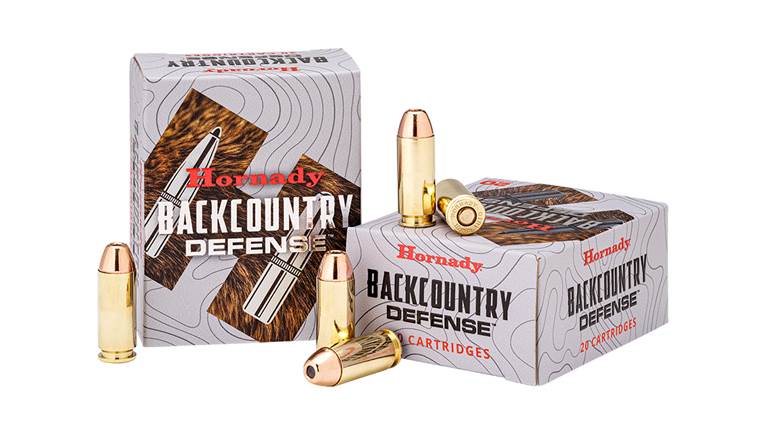1. New Discoveries: Doppler Radar, Heat Shield Tip
Hornady is one of the first American ammunition manufacturers to embrace the use of Doppler radar for ballistic testing. Previously, a bullet’s flight data was collected as the projectile physically passed a chronograph or acoustic microphone, a process that yielded only a handful of data points per shot. Given those points, flight characteristics—including trajectory, ballistic coefficients and drag coefficients—were interpolated, with curves developed based on educated guesses and a connect-the-dots mentality. Doppler radar is capable of tracking at bullet for its entire flight and produces hundreds of thousands of data points for each shot, taking all the guess work out of the equation.

Testing with Doppler revealed that current tipped bullets, both Hornady’s and its competitors, were experiencing a change in ballistic coefficient at around 150 yds. when fired at high velocity. The only explanation to account for the irregularity was that the actual shape of the bullet was changing, and the only segment of the bullets that could change was the polymer tips. Bingo. At high speed, air resistance against the tips was actually producing temperatures capable of melting the polymer tips. Knowledge is power, Hornady set to work and has since developed a polymer capable of handling the heat. The resulting Heat Shield Tip maintains its aerodynamic profile, improving accuracy and ensuring consistent performance.
2. New Products: ELD-X Bullets and Precision Hunter Ammunition 
The biggest news from Hornady ammunition is the introduction of the Extreme Low Drag-eXpanding (ELD-X) bullets. Designed to be a match-accurate, all-range hunting bullet, the ELD-X incorporates the Heat Shield Tip, and relies heavily on the company’s knowledge of tapered jacket design and Interlock technology—Hornady’s solution for securing the core and jacket together—to create a fantastically accurate (0.5 MOA) bullet that will reliably expand within conventional hunting ranges (0-400 yds.), and far beyond. The jacket and Interlock are crucial for achieving what Hornady is calling continuous expansion, basically the bullet will blossom on impact and, especially at close range/high velocity, will continue to expand and maintain a mushroom shape, even as it sheds some material. The ideal hunting bullet produces rapid and lethal terminal effects by creating a large, long temporary wound cavity and achieving deep penetration. I’ve seen the EDL-X deliver both on nearly 40 animals during an African plains hunt, with large and small game taken as close as 20 yds. and as far as 860 yds. Initial offerings will include:
|
Projectile |
G1 B.C. |
G7 B.C. |
|
6.5 mm, 143 gr. |
.625 |
.315 |
|
7 mm, 162 gr. |
.613 |
.308 |
|
7 mm, 175 gr.* |
.660 |
.330 |
|
.30 cal., 178 gr. |
.535 (est.) |
.271 (est.) |
|
.30 cal., 200 gr. |
.626 |
.315 |
|
.30 cal., 212 gr.* |
.673 |
.336 |
|
.30 cal., 220 gr. |
.650 |
.325 |
*Long bullets/non-standard magazine length loads. 
In addition to component ELD-X bullets, Hornady is introducing a new line of loaded ammunition based on the capabilities of the new projectiles. Hornady’s Precision Hunter will combine the ELD-X with the best powder, brass and primers in order to make good on the company’s goal of match-accurate, all-range hunting ammunition.
|
Precision Hunter Ammunition |
Velocity (f.p.s.) |
|
6.5 Creedmoor, 143-gr. ELD-X |
2700 |
|
7 mm Rem. Mag., 162-gr. ELD-X |
2975 |
|
.308 Win., 178-gr. ELD-X |
2600 (est.) |
|
.30-’06 Sprg., 178-gr. ELD-X |
2750 (est.) |
|
.300 RCM, 178-gr. ELD-X |
2900 (est.) |
|
.300 Win. Mag., 200-gr. ELD-X |
2860 |
|
.300 Rem. Ultra Mag., 220-gr. ELD-X |
2910 |
|
.30-378 Wby., 220-gr. ELD-X |
3025 |
An offshoot of the ELD-X, and utilizing the Heat Shield Tip, ELD Match bullets, non-expanding, will also be available in various calibers and weights.
3. A New Standard
Being an avid consumer and evaluator of ammunition and firearms, I believe the work Hornady has done to produce the ELD-X bullet will lay a foundation for future standards and practices within the ammunition industry. Doppler radar far outpaces the testing methods of yore in terms of quantity and precision of ballistic data collected. It removes the need to assume aerodynamic behaviors and trajectory curves, and instead provides cold, hard numbers. 
Hand in hand with the use of Doppler radar, standard conditions need to be developed and adopted for testing new ammunition and advertising the results—particularly velocities and ballistic coefficients. Just as the radar fleshes out the ballistic data, standard conditions with regard to atmospherics (temperature, humidity, etc.) would guarantee that consumers can compare “apples to apples” when ammunition shopping. A bullet or cartridge tested in the Minnesota winter is not going to perform the same way it might during the summer in Arizona; we are shooters, we know this. However, those results, regardless of where or when they were collected, can be corrected back to a standard set of conditions. Such corrections would level the playing field, eliminate exaggerated or understated data, and allow for direct comparison of ballistic characteristics from load to load and brand to brand. It can be done, it’s already being done, but it’s a practice that I think needs to be adopted by the industry at large.
For more on the ELD-X bullet, Precision Hunter ammunition and many more new introductions from Hornady, check out the company’s 2016 product introduction video here.


























